Germans on beans
Fulfill our promise.
23 June 1915 d. 3 Grenadier Regiment Pernovsky was in reserve army at the village. Hodel At about 1 in the morning of 24, June, the regimental commander, Colonel A. Osetsky, received an order from the 25 Army Corps No. 2188 indicating that the army commander had transferred his regiment to the 25 Corps commander. The document indicated that the enemy managed to break through the 21 and 10 grenadier regiments near the Conrad colony in 12 for an hour and private reserves and two battalions of the 31 infantry regiment were moved there to parry the breakthrough. It is witnessed. The regiment was ordered to be ready to move to destroy the enemy.
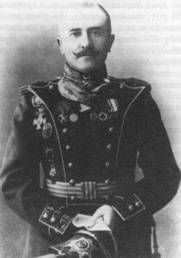
A.V. Osetsky.
In 8 hours of 50 minutes in the morning A.V. Osetskiy received an order by telephone from the chief of staff of the 3 Grenadier Division to take the floor in der. Pushno Godovsky. After 10 minutes, the regiment came forward - moving for Years. In der. On the intermediate telephone station, the commander of the 3 th division of the Grenadier Division, Major General N. M. Kiselevsky, transferred from vil. Svidno, through the chief of the regimental communications team, an order to move to Godov and stand in a grove to the south of this village along the road Years - Svidno. Around the 11-ti hours the regiment stood in the indicated grove consisting of: 1-th battalion, 4-th battalion and consolidated battalion (from the mouths of the 2-th and 3-th battalions, greatly reduced after the battle of 17-th June near the village of Senno) with 8 machine guns.
In 12 hours 30 minutes the regiment received an order from the command of the division for the number 1419 indicating - to rest and dine, awaiting instructions from the commander of 25-th army corps. After 14 hours, the order No. 1421 was received, indicating that the corps commander ordered the entire regiment to act immediately at the disposal of the commander of the 3 grenadier division. Also in the prescription it was said: “Take the road past the forester’s house to the northern edge of the forest, north-east of the colony of Belovod, where you will receive detailed instructions. The task is to clear the ravine from the Germans, that to the south of the inscription Vandaline. The Germans got into it at the breakthrough of our front yesterday to the west of the colony Sections. The corps commander ordered the end of this work by 6 hours of the evening, and then pull you into the corps reserve. ”
Soon the chief of staff of the 3 Grenadier Division arrived at the regiment and verbally explained to the commander of the regiment the situation that the northern part of the ravine south of der. Vandaline units of the 31 Infantry Regiment of Aleksopol are already operating - but the composition of the latter is very small (no more than 3 companies are left from the 4 battalions) and that, according to the Aleksopol report, there is almost no enemy in the ravine. The chief of staff handed the order to the commander of the division: to thoroughly search through the entire ravine and groves to the south of the village. Vandaline to the creek north of der. Chruslins and Beans and clear him from the enemy - by contacting parts of the 12-th Grenadier Astrakhan and 10-th Grenadier Little Russian regiments. Aleksopoltsev A.V. Osetsky had to subjugate himself.
The regiment focused on der. Vandaline - at the road from this village to the south to the master's court Boba. At about 16, N. M. Kiselevsky sent an order over the telephone to clear the ridges of the ravine from small enemy groups, if there were any.
AV Osetsky decided to move enhanced intelligence - having appointed 2 companies for this purpose - 3 and 15. The 3-th company was given a following line south of the village. Vandaline - between the roads of Stanislav, the lordship of Boba and Smol. Barracks - Chruslins; The 15 Company - the strip between the roads of Stanislavov - the manor's court Bean and Vandalin - Bean. Direction - by 15 th company. The task is to find out the situation, the location and the front of the enemy, to clear the ravines of enemy units and to contact Aleksopolites, Astrakhanians and Little Russians. The mouths were ordered to act quickly and energetically. To support reconnaissance companies and to communicate with the regiment, half a company was sent from the corresponding battalion. Behind the reconnaissance companies was a telephone.
In 17 hours 20 minutes of the company went to the southern edge of the nearest to the village. Vandaline forest. And they began to undergo heavy shelling from the enemy's light artillery. The companies moved to the next edge, and then to the southern edge of the second forest - from the village of Vandalin. The company, advancing east of dor. Stanislav - the master's court Boba, found aleksopoltsev in a ravine south of this forest. The temporary regiment commander informed the company commander that the regiment was preparing for a further offensive. At the same time, the company, advancing to the west, was contacted with Astrakhan.
There were no faithful reconnaissance for the Aleksopolites: for example, they believed that there was only one spur of the ravine before them, and there were two spurs. They also believed that there was almost no opponent, but in the next ravine they had to deal with the advanced parts of the latter.
Intelligence has already entered into a firefight with the protection of the enemy. Having received the order of the division command, A.V. Osetsky advanced: the 1 battalion to the 3 squadron, the 4 battalion - to the 15 squadron. Task: quickly move forward and, having joined reconnaissance companies, destroy the enemy who occupied the trenches of one of the neighboring regiments. A directive was given to the battalion commanders - to advance with weak parts from the front, to have enemy-covering parts on the outer flanks and to keep at least companies in reserve to repel accidents.
After 17 hours, the battalions quickly moved forward. Their movement was somewhat delayed by the enemy airplane circling over the offensive zone - it was necessary to lie down and wait in open places. After the 18 hours, the advancing battalions had already been subjected to strong fire from enemy artillery — sometimes turning into a hurricane. At this time, the advanced companies slowly moved forward - leading battles with the advanced parts of the enemy, pushing them aside and finding out the further situation. Our artillery fired at the approaches of the enemy’s reserves along the eastern outskirts of Khruslina, the manor’s court of Boba and Der. Beans.
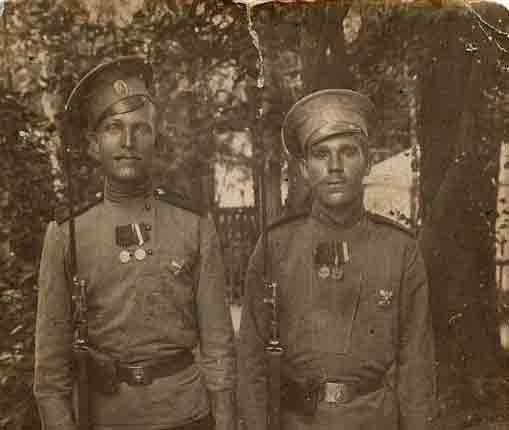
Fighters of the Peruvian Grenadier 3 Regiment
In the 20 hour, the battalions reached the last ravine in front of the enemy-occupied trenches line - only about 700 - 1000 steps were left before the enemy. By this time, advanced companies and Aleksopol residents joined the battalions. Intelligence found out the presence of large enemy forces, and AV Osetsky asked the division commander to order the artillery to increase fire on the approaches of the enemy’s reserves, and, in particular, to the mill at the manor’s court, Boby - where intelligence found the presence of machine guns and an observation post. The enemy has already bombarded the advancing shells of light and, mainly, howitzer artillery. Having called the temporarily commander of the Alexopol regiment by telephone, A. V. Osetsky exchanged with them the situation. Since the Aleksopolites were very exhausted, they were ordered to join the regimental reserve of Pernovtsy, advancing beyond the left combat area.
After the advancing units were moved to their original positions for further offensive in open areas, the offensive began with the assistance of Russian artillery fire, which provided real and powerful support to the detachment. The latter circumstance was vividly confirmed later - when, on the slope of the manor’s court, Boba and der. Khruslin were found many corpses of the Germans, oblique artillery. With the beginning of the attack Pernovtsy and Aleksopoltsev and artillery of the enemy opened mad fire - mostly in fluent bursts. Two telephone lines leading to the combat unit of the regiment, all the time interrupted - intersected in many places by artillery shells. It was extremely difficult to establish other methods of communication: cavalry soldiers hardly reached half the distance, and the pedestrians walked slowly. Nevertheless, the connection was maintained by all forces - and even was stretched to the warhead of the 3-i telephone line.
At about 22 hours, attacks began. After the first of them, the left combat area captured the front line of enemy trenches. The enemy, after a short bayonet battle, began to retreat to separate houses north of the court of Boba. And then, reinforced from other lines of the trenches, he went into counter-attack with thick chains with strong supports.
Two consecutive counter-attacks of the enemy, which greatly exceeded the number of Pernovists, were consistently repelled. In the intervals between counter-attacks, the enemy developed a long fire from rifles and machine guns - there were a lot of them in front of the front of the left combat area.
The Russians again rushed to the attack - and the enemy could not stand it and rushed back, and set fire to the manor’s court and the village. Beans. The glow of the fire began to illuminate the chains of the grenadier. The enemy once again lingered - and opened a deadly fire from rifles and machine guns. Pernovskie company again rushed forward - and the enemy began to retreat.
At the same time, keeping the direction along the left combat area, the right sector also moved. His chief, Colonel E. M. Evseev, was supposed to provide the right flank of the left combat area, which was dealt the main blow - by acting on the flank of the enemy.
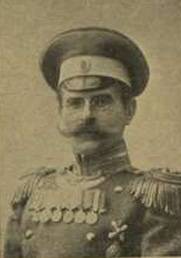
E.M. Evseev
Under the enemy’s hurricane artillery and rifle fire, the 1 Battalion began attacking a position heavily occupied by the German infantry. His companies have swept away everything in their path. With a swift blow, companies crashed into the dense mass of the enemy - a strong bayonet battle ensued here, as a result of which the Russian units occupied enemy trenches.
Strengthened by reserves that came from the rear trenches, the enemy rushed into a counter-attack - and the position was repeatedly passed from hand to hand. Aleksopoltsy found themselves in a ravine - behind the right section and partially between the sections - and were subordinated to Colonel E. M. Evseev. 2 companies from the general reserve A.V. Osetskyi moved the captain of Vadarsky (shock) to the site.
At about 1 in the morning of 25 June, the situation was as follows: the left combat sector captured all lines of the enemy's trenches and took up a position in the last of them. The head of the site thought it was the Germans regiment converted by the Germans — but it turned out that the Ukrainians had mostly been buried by the enemy, and as a result, the attackers, being carried away by the pursuit, walked kilometers to 1,5 south of the latter. Since the task of the Pernovsky regiment was to capture the former Russian trenches occupied by the Germans, Captain Vadarsky's plot was pulled back to the mountainside — where the good sector of shelling turned out to be. A plot of Col. E. Yevseyev was drawn back. The last section had to be very tight - and in 23 hours of 40 minutes, a half pound of general reserve moved to support it. Aleksopoltsy operated in the intervals between the right and left combat areas.
Probably, the number of wounded Germans was very large - because, contrary to their custom, the Germans did not pick up the dead. Until 1200 Germanic corpses remained on the field of hot bouts - about 1,5 km ahead of the grenadier trenches. Three prisoners were taken - one of 217, and two more of the 220 of the reserve regiments. Moreover, the corpses belonged to the composition of the 3 German regiments - 217-th, 218-th and 220-th. The small number of prisoners is explained by the fact that the Germans often raised their hands and then shot at the Russians - as a result, they did not take them prisoner. Most of those killed were pinned down with bayonets.
Russian casualties: a regimental priest was killed, who was marching ahead of the 1 Battalion to storm the German trenches, officers: killed - 2, wounded - 3, grenadier: killed - 177, wounded - 479, contused - 6 and went missing - 8.
The ratio of the losses of the opponents speaks about very much - only the German losses killed by 2 exceeded the total losses of the squadron of A. V. Osetsky. Fight at der. Beans - a page of military glory Pernovsky grenadiers. Pernovtsy fought with significantly superior enemy forces - with the Germans' 3 regiments - and proved that they are fighting in Suvorov style - not by number, but by tactical ability.
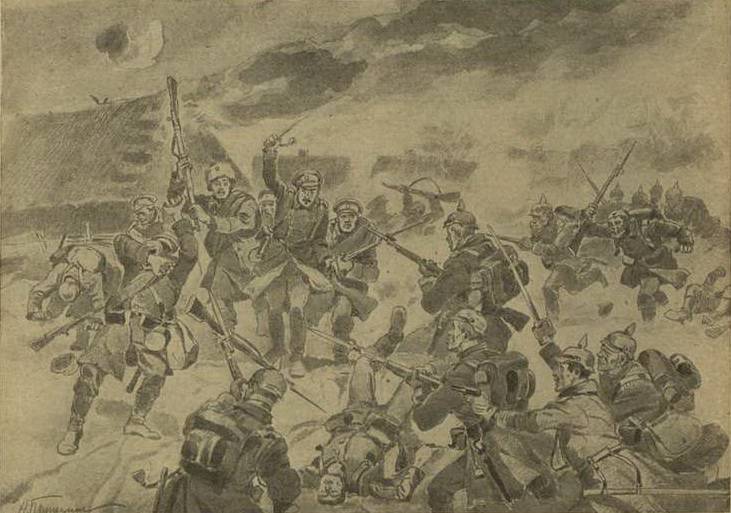
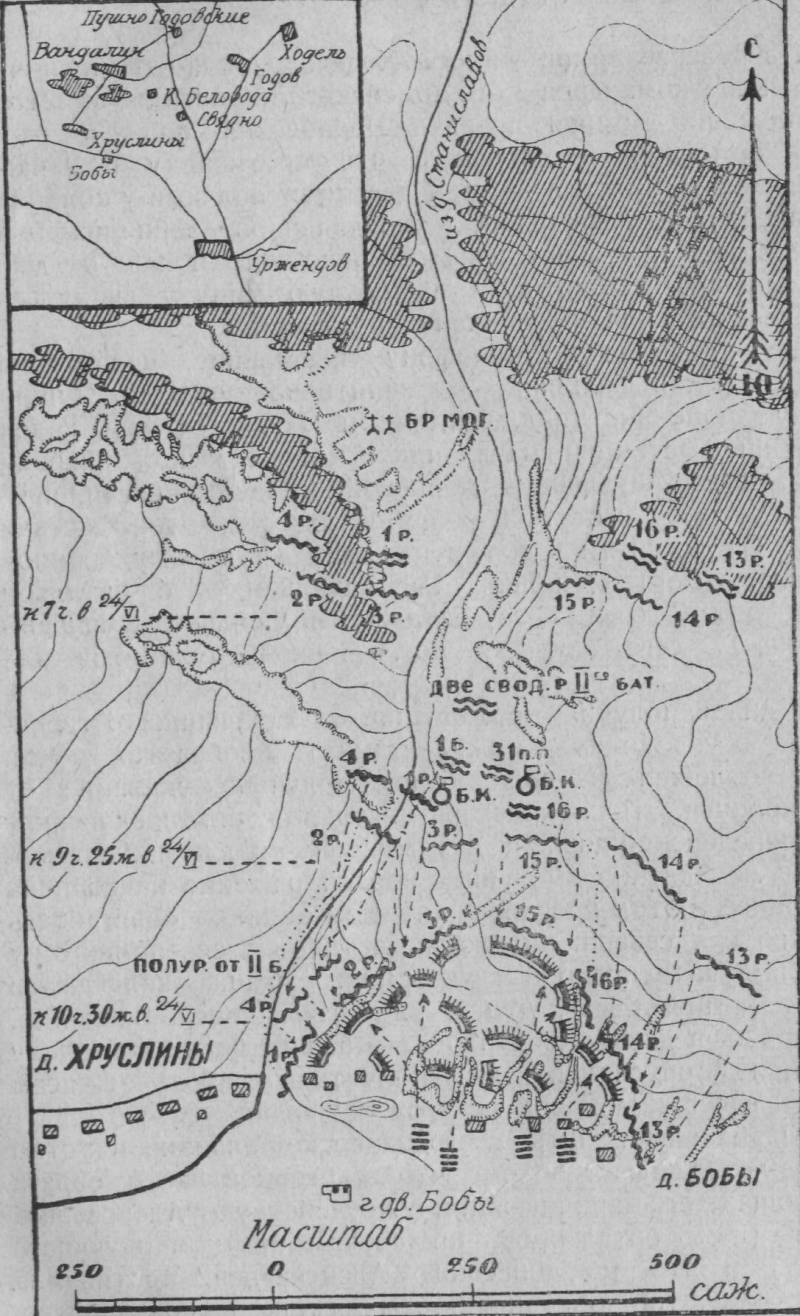
Information